Indian Trains
One of my favorite parts of travel in India has been the vast, extensive Indian train system. The country of India is huge, with long distances between major cities and tourist attractions. Because domestic flights are expensive, we found that the majority of Indians choose to take trains. This worked out perfectly for backpackers like us, because there were plentiful options for cheap train travel between cities at all times of the day.
Our favorite trains were the night sleeping trains, because they not only saved a day’s worth of transportation, but also saved us a days worth of lodging. And they weren’t bad at all! Unlike overnight buses and trains I have traveled on before, the overnight trains in India have fully flat beds, often with sheets, pillows, and blankets. The overnight trains had several classes, with varying levels of comfort.
- “Second class” is the lowest level, with only seats.
- “Sleeper” is three levels of beds per compartment, so 6 total, plus 2 extra beds on the aisle. No AC, but lots of fans.
- There are three “AC” levels, numbered according to how many levels of beds. 3AC, 2AC, and 1AC. 3AC is pretty much just Sleeper class with AC, but the beds and trains get progressively nicer from there.
- And there is an outdated “First Class”, which has nice, private compartments, but no AC.
During our many train trips across India, we traveled in every class except for Second Class and 1AC, and we tried to get on 1AC but were waitlisted. For me, as long as there was A/C I was okay, and even some of the Sleeper trips were not that bad, as long as it wasn’t too hot and the fans were blowing. The beds were more comfortable than I expected, not quite long enough for me to stretch out, but still plenty of room. Pillows and sheets are basic, but similar to the hostels we have been staying at.

Jami sleeping on a Sleeper-class bed, in the top bunk. As you can see in the background, the train was all full.
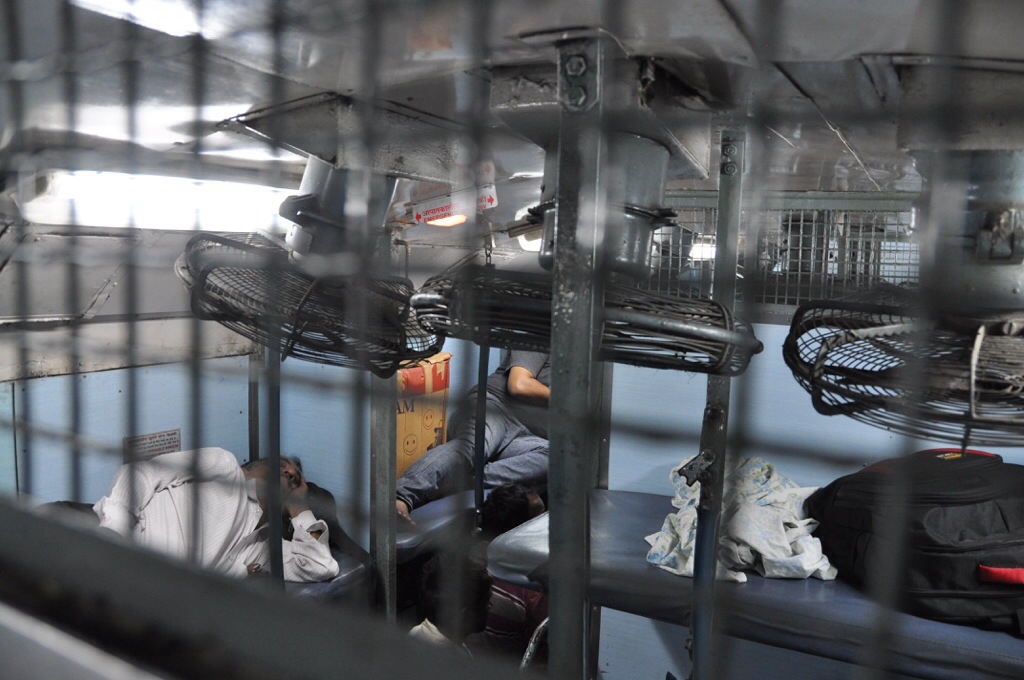
The Sleeper-class trains had lots of bars and metal fans, giving them a prison-like appearance to me. But the fans worked very well; when the train was in motion they were nice and cool.
Bathrooms were basic, particularly on the lower classes of trains
During a trip, vendors were always coming through the cars selling all sorts of food and drink, primarily chai tea. We found chants of “Hot Tea! Hot Tea!” (in Hindi or the local language) to be common everywhere.
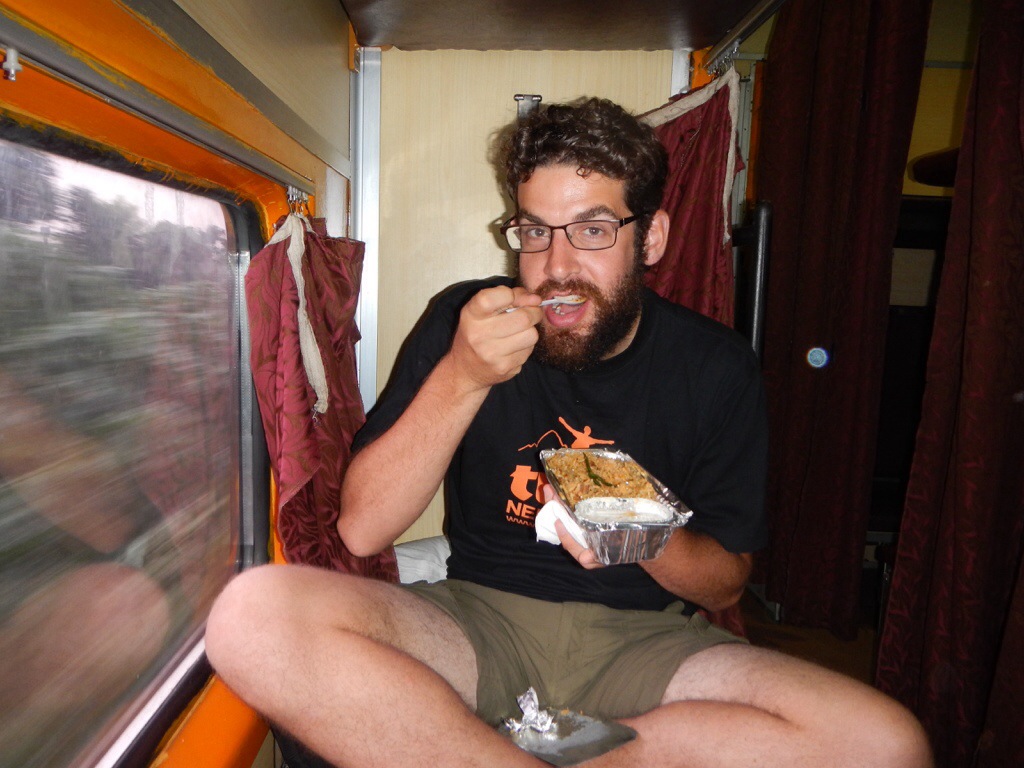
Chowing down on some biryani. When there were many vendors present, it was almost like a dim sum meal; we’d inspect each vendor’s goods and choose the best-looking food.
Security was an initial concern for us, but turned out to not be an issue. Our biggest worry was someone would take a bag late at night. The night trains make numerous stops over the course of the night, when everyone is sleeping. It would, theoretically, be easy for someone to hop on the train, grab a bag, and get off once the train started moving. On the advice of several travel blogs, before we left the US we purchased metal bag “nets” that cover an entire bag and can be chained to a post. They worked great on Indian trains – we would lock our bags below, and wouldn’t have to worry about them at all. But it was clear our efforts were overkill due to the number of “What are those crazy Americans doing?!?!” looks we received from fellow passengers as we set up our nets.
Everyone we met on the trains was, for the most part, very nice and accommodating to the fact that we had no idea what we were doing. We talked about where we were from and where they were from; how we were liking India; places we should visit; and the status of the train. They were also helpful with my biggest complaint about Indian trains – the lack of stop announcements. There are literally no announcements on Indian trains about what stop the train is currently at or what the next stop will be. Stations sometimes have signs, but often not, and any signs that do exist usually do not have a name in Latin characters. The easiest way to know when to get off is the estimated arrival time printed on tickets, which was usually pretty accurate. But if a train was delayed, all bets were off. It made for several stressful situations, wondering where we were and when we should get ready. The worse case, as Jami already wrote about, was in Agra, when we had to jump off the train as it started moving again because we were late getting our stuff ready. The reason that happened, however, was because the train pulled into Agra at 4am and everyone was asleep. At more decent hours, people in our compartment were great about answering our questions as to what stop we were at and when we were going to arrive.
It was clear that the entire train system is currently undergoing a massive modernization effort, with different trains and stations at different stages of that process. The Delhi metro’s trains had fantastic next-stop announcements, so I’m confident the Indian mainline trains will get stop announcements soon enough.
Stations were often more modern than the trains, with electronic boards listing trains and their status. Some platforms even had signs indicating exactly where your specific car would stop. By the end of our time in India we became pros at navigating the stations, finding our platforms, and locating our train car. Once you know the system, it is all very easy. But both modern and old stations had one thing in common: they were all very crowded. Travelers sprawled out over every flat surface as they waited for trains.
Our one piece of advice for future travelers to India: book trains early. The trains quickly sell out and classes fill up. If you know where you are traveling, online ticket bookers such as Cleartrip (www.cleartrip.com) make it easy to find which trains are available and book seats for minimal cost. Even cancelling a ticket is only a minimal expense if done far enough out, and can easily be done online. If you are unable to book early, our advice is to book at the train stations’ foreign reservation window (most big stations have them, and they can book any train in the country). By showing your passport (if it’s foreign), you get access to special seats that are set aside for tourists and don’t show up on the online travel sites.
We were very glad we chose to travel by train so often. They were efficient and cheap, and let us see a lot of Indian countryside. It was fascinating to see the land change from jungle, to mountain, to farmland, to desert – and then back again. In each city we stayed in we were always surrounded by people. But the views outside our train windows showed that once you leave the cities India rapidly becomes vast stretches of peaceful farmland.




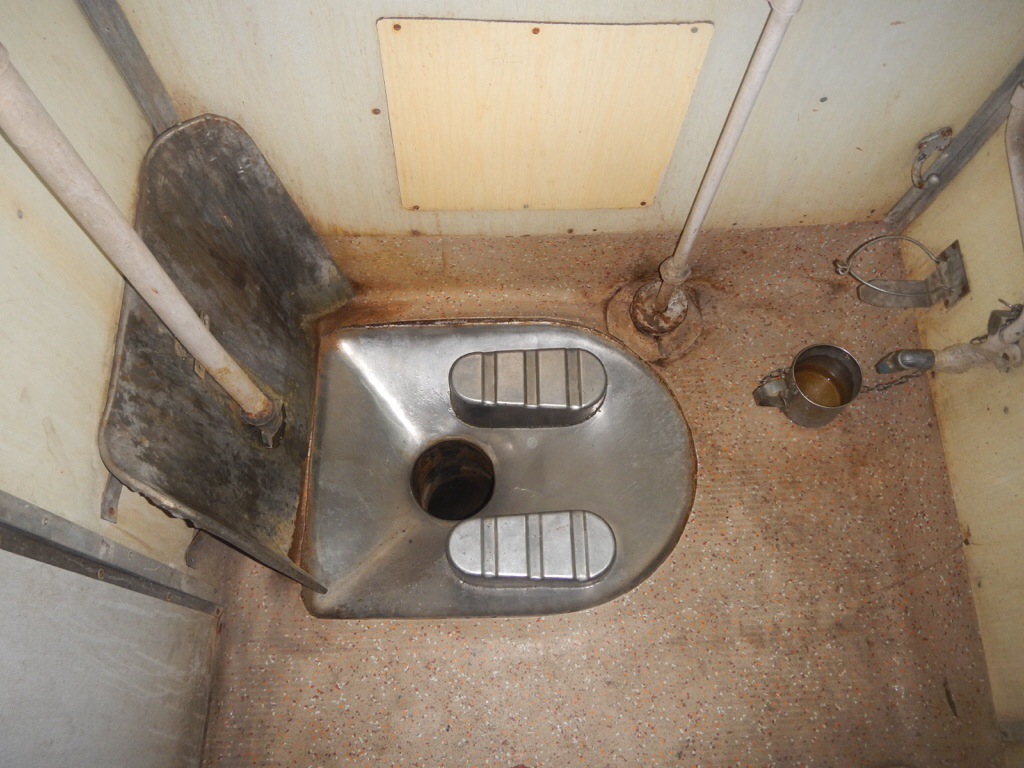
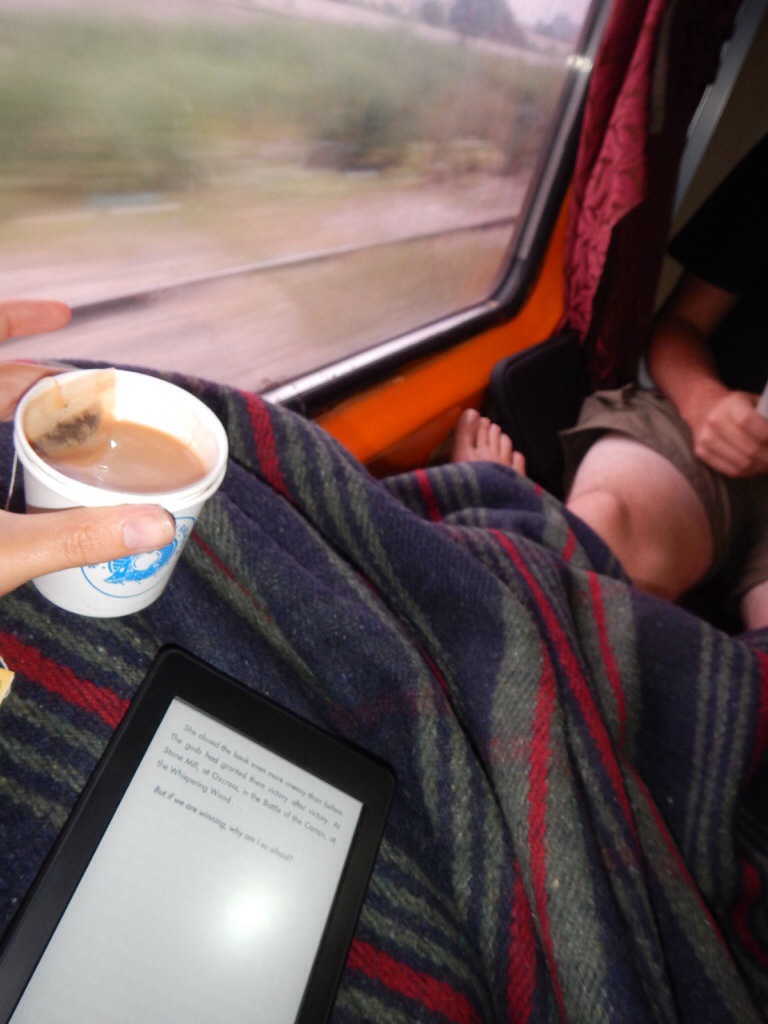
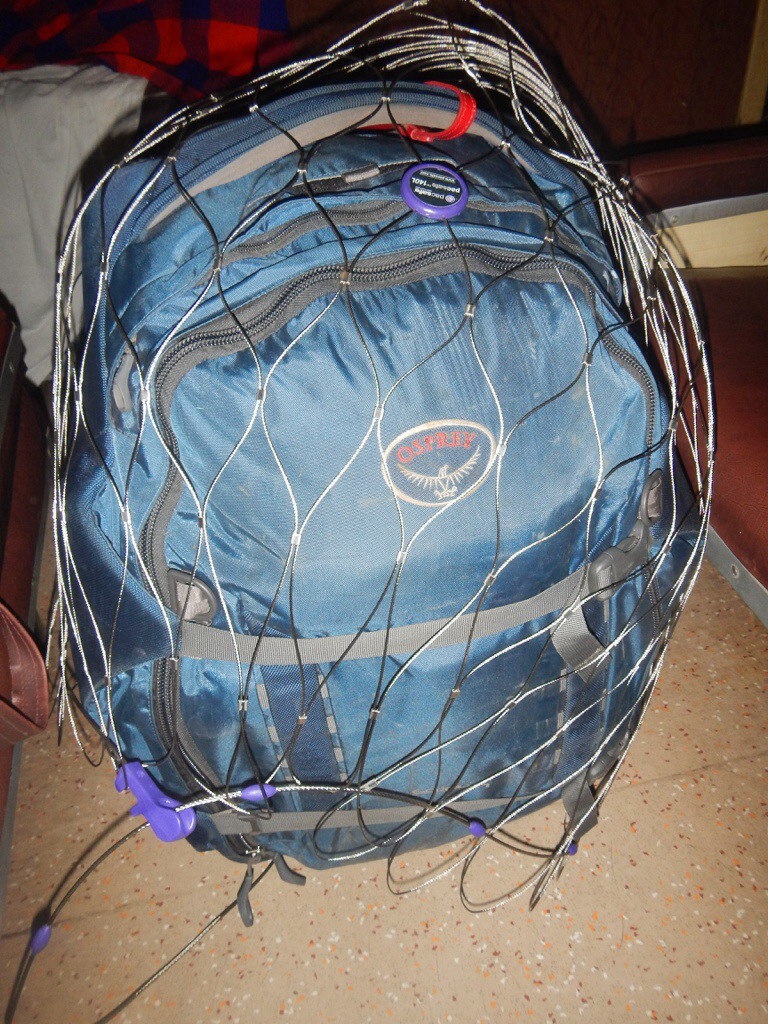

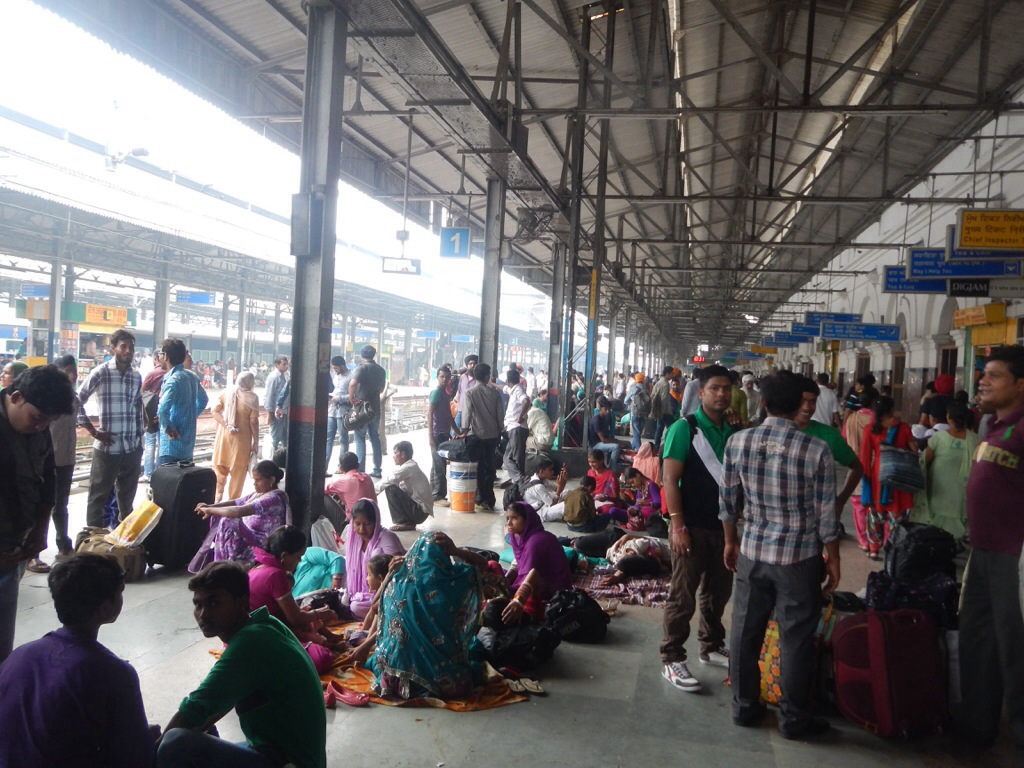

Great report!
Thanks!
Its great that you are both such good & flexible sleepers. Wonderful that you’ve had so many good interactions with the locals.
We’re not always the best sleepers… sometimes we’ve just had to life with what sleep we’ve gotten! But for the most part, the trains in India were great for sleeping.
Interesting! I imagine the train cars smelled pretty bad?
Nope, not bad at all. The bathrooms were another matter, however.
Sorry to come to your blog this late in the game, but we are loving all of your posts and the descriptions of your experiences! What a great way to learn about the world! Hats off to both of you. We’ll be eager to talk to you when you return to the West Coast!
Thanks – glad you’re liking the posts!